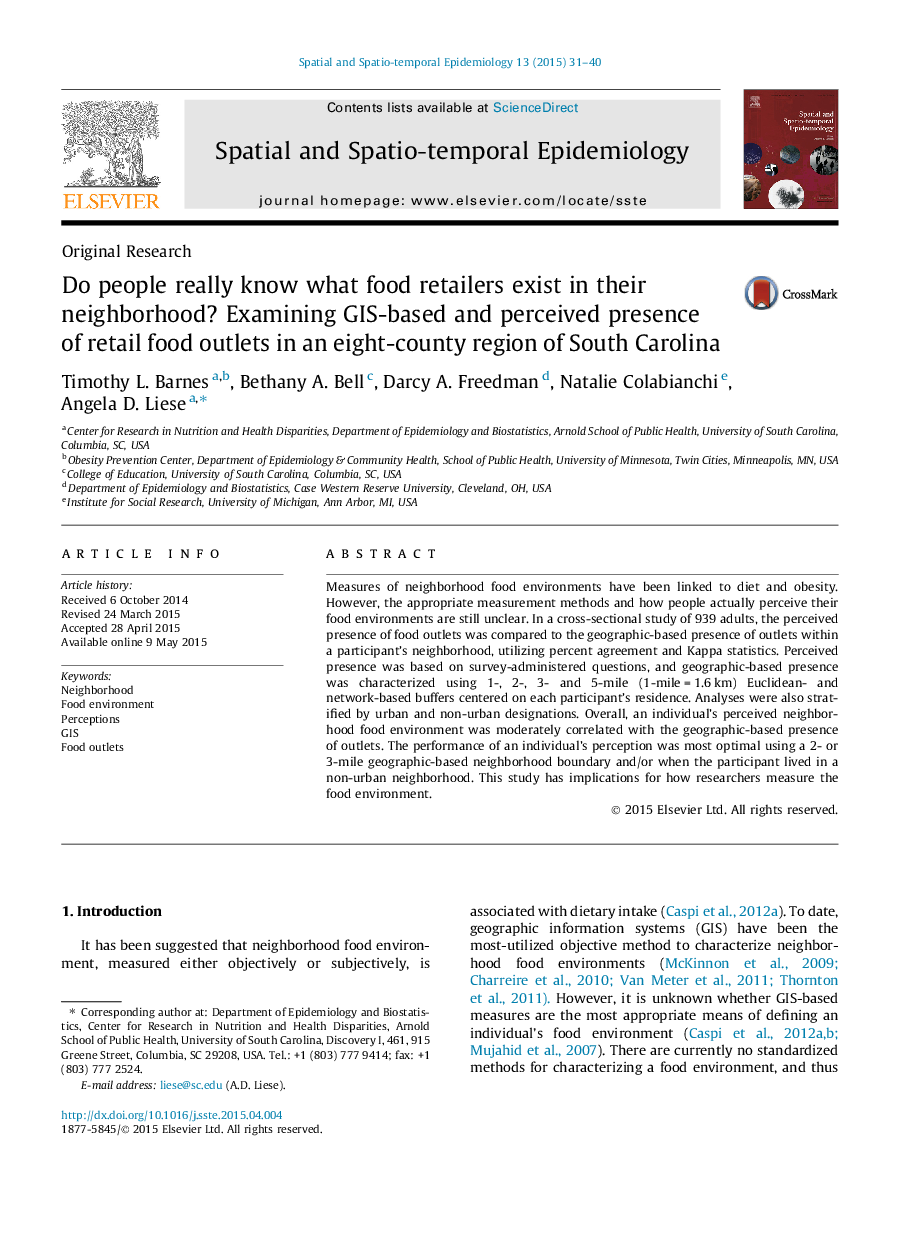| Article ID | Journal | Published Year | Pages | File Type |
|---|---|---|---|---|
| 1064317 | Spatial and Spatio-temporal Epidemiology | 2015 | 10 Pages |
•Individuals moderately perceived the presence of food outlets in their neighborhood.•Agreement statistics were affected by neighborhood boundaries and urbanicity.•Neighborhood boundaries should be considered in future food environment measures.
Measures of neighborhood food environments have been linked to diet and obesity. However, the appropriate measurement methods and how people actually perceive their food environments are still unclear. In a cross-sectional study of 939 adults, the perceived presence of food outlets was compared to the geographic-based presence of outlets within a participant’s neighborhood, utilizing percent agreement and Kappa statistics. Perceived presence was based on survey-administered questions, and geographic-based presence was characterized using 1-, 2-, 3- and 5-mile (1-mile = 1.6 km) Euclidean- and network-based buffers centered on each participant’s residence. Analyses were also stratified by urban and non-urban designations. Overall, an individual’s perceived neighborhood food environment was moderately correlated with the geographic-based presence of outlets. The performance of an individual’s perception was most optimal using a 2- or 3-mile geographic-based neighborhood boundary and/or when the participant lived in a non-urban neighborhood. This study has implications for how researchers measure the food environment.
